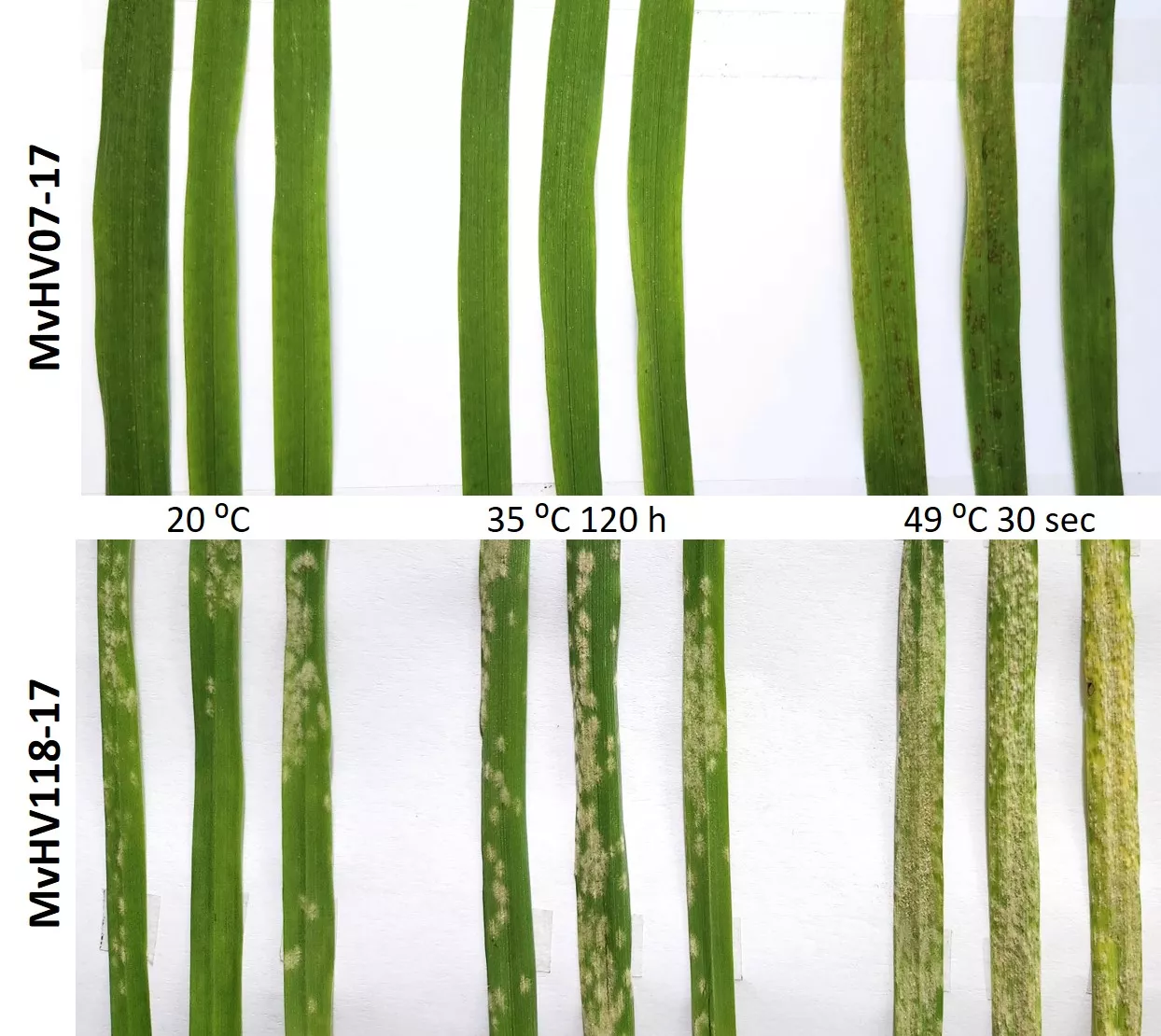Researchers from the Plant Protection and Agricultural Institutes at the HUN-REN Centre for Agricultural Research (HUN-REN ATK) have been cooperating for years to investigate how high-temperature-induced heat stress may influence the disease resistance of an economically important cereal crop, barley. In their recent paper published in the prestigious scientific journal Phytopathology, they report that, in response to prolonged high temperatures, different physiological processes are functional in a powdery-mildew-resistant (MvHV07-17) and susceptible (MvHV118-17) Hungarian-bred barley line, as compared to a short-term heat shock. The results may contribute to the understanding of the heat-stress-activated physiological processes that may deteriorate a crop plant’s resistance to pathogens and could be used in breeding crops resistant to both abiotic and biotic stresses.
As an abiotic environmental factor, temperature may have a profound influence on the physiology of plants. Furthermore, there is an increased concern and awareness of the rapid fluctuations of crop performance and, in particular, crop disease resistance, due to the temperature extremes that characterize the ongoing global climate change.
One part of barley plants was exposed to high temperatures (35 °C) for five days before powdery mildew inoculation, during a 16-hour daylight period, while temperature was set to 25 °C during the 8-hour long dark periods. The other group of barley plants, however, received a short heat shock pretreatment (immersion in 49 °C water for 30 seconds). Following these heat treatments, the two barley lines were inoculated with the A6 pathogen race of the barley powdery mildew fungus (Blumeria hordei). The appearance of leaf symptoms was assessed one week after infection (Figure 1).

Figure: Macroscopic symptoms on primary leaves of heat-pretreated resistant (MvHV07-17) and susceptible (MvHV118-17) barley lines seven days after inoculation with barley powdery mildew (Blumeria hordei). Inoculation was performed two hours after heat treatment (35/25 ⁰C day/night for 120 h or 49 ⁰C water for 30 sec). Plants were kept at 20 ⁰C before and after heat treatments. Control plants were maintained at 20 ⁰C. The barley line MvHV07-17 pretreated with short-term heat shock (49 ⁰C, 30 sec) showed tiny white colonies and small necrotic spots. The susceptible line MvHV118-17 exhibited higher infection rates after heat treatments.
The results demonstrate that prolonged high-temperature stress has distinctly different effects on the two barley lines. The MvHV07-17 line, which displays a robust resistance to the A6 powdery mildew race, remained symptomless even after a pre-exposure to 35 °C. On the other hand, leaves of the intermediately susceptible MvHV118-17 line were more severely infected by powdery mildew following high temperature stress. This implies that under high temperatures, certain defense mechanisms may retain their effectiveness, while others may significantly decline.
Remarkably, however, a short heat shock pretreatment (49 °C water bath for 30 seconds) has enhanced powdery mildew susceptibility in both barley lines. Leaves of the resistant MvHV07-17 line developed tiny powdery mildew colonies and tissue necrosis, while the susceptibility of MvHV118-17 barley has dramatically increased. It seems that the heat shock pretreatment compromised defense mechanisms that play an important role in the disease resistance of both barley genotypes. One of the primary and most significant defense lines of barley plants that operate against powdery mildew is the thickening of cell walls (papilla formation) in barley epidermal cells at the site of pathogen ingress. The short heat shock pretreatment suppressed papilla formation in both the resistant and susceptible barley lines, however, this suppression was much more significant in the susceptible plants. Interestingly, the resistant MvHV07-17 line also activated a defense response accompanied by local cell death (hypersensitive reaction) that could inhibit the development of severe powdery mildew symptoms.
The above results may contribute to the understanding of heat-stress-activated physiological processes that may deteriorate a crop plant’s resistance to pathogens and could be used in breeding crops resistant to both abiotic and biotic stresses.